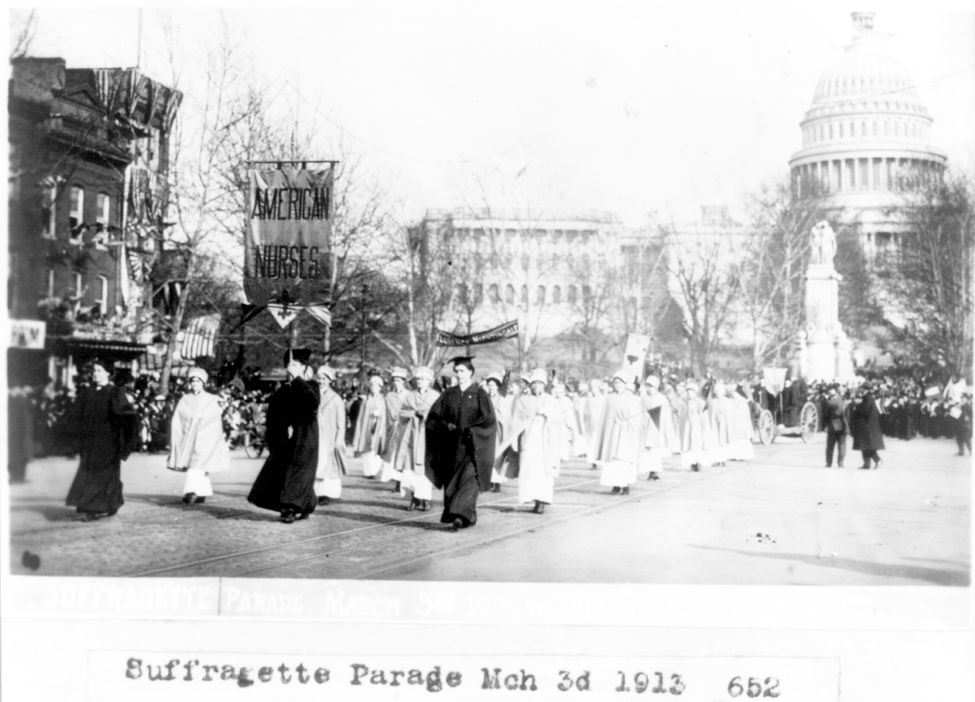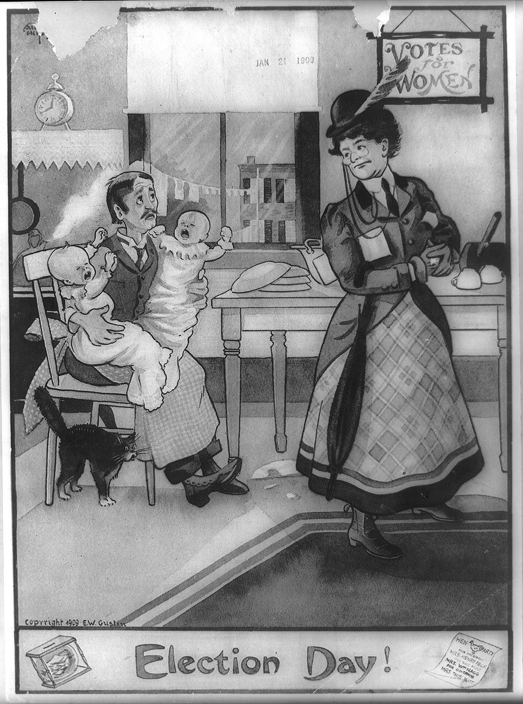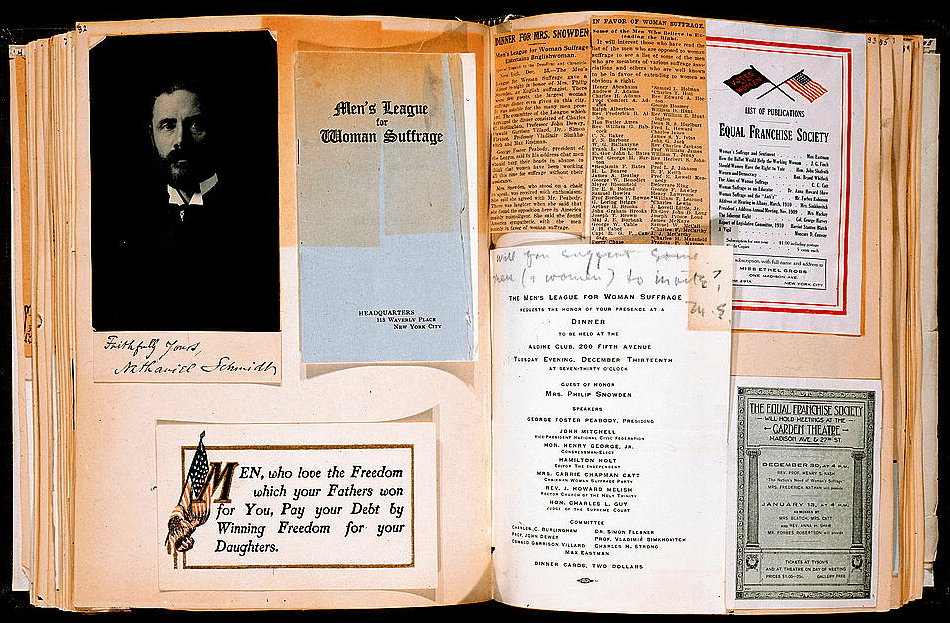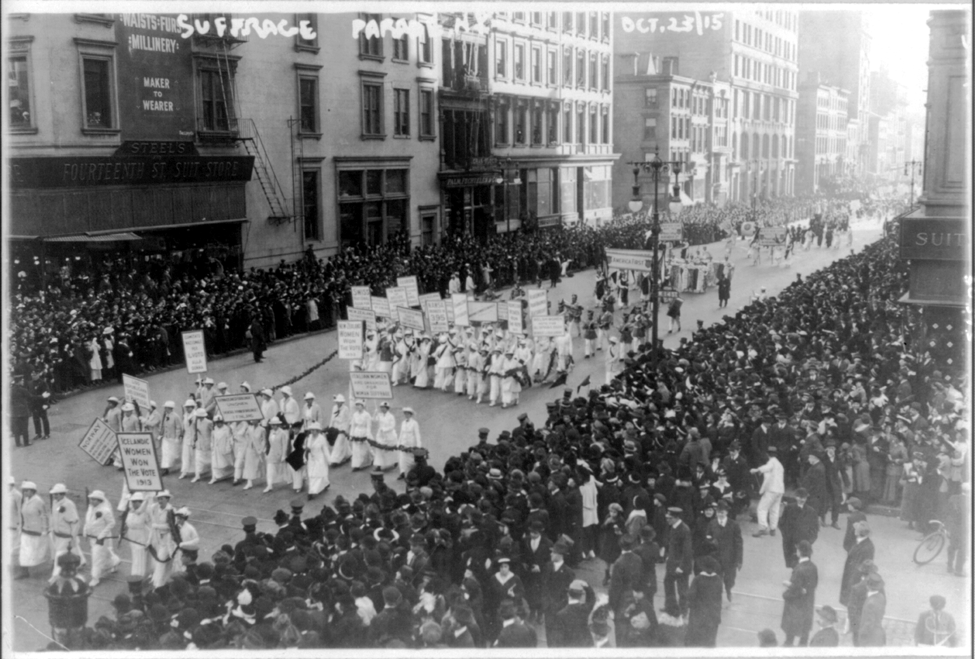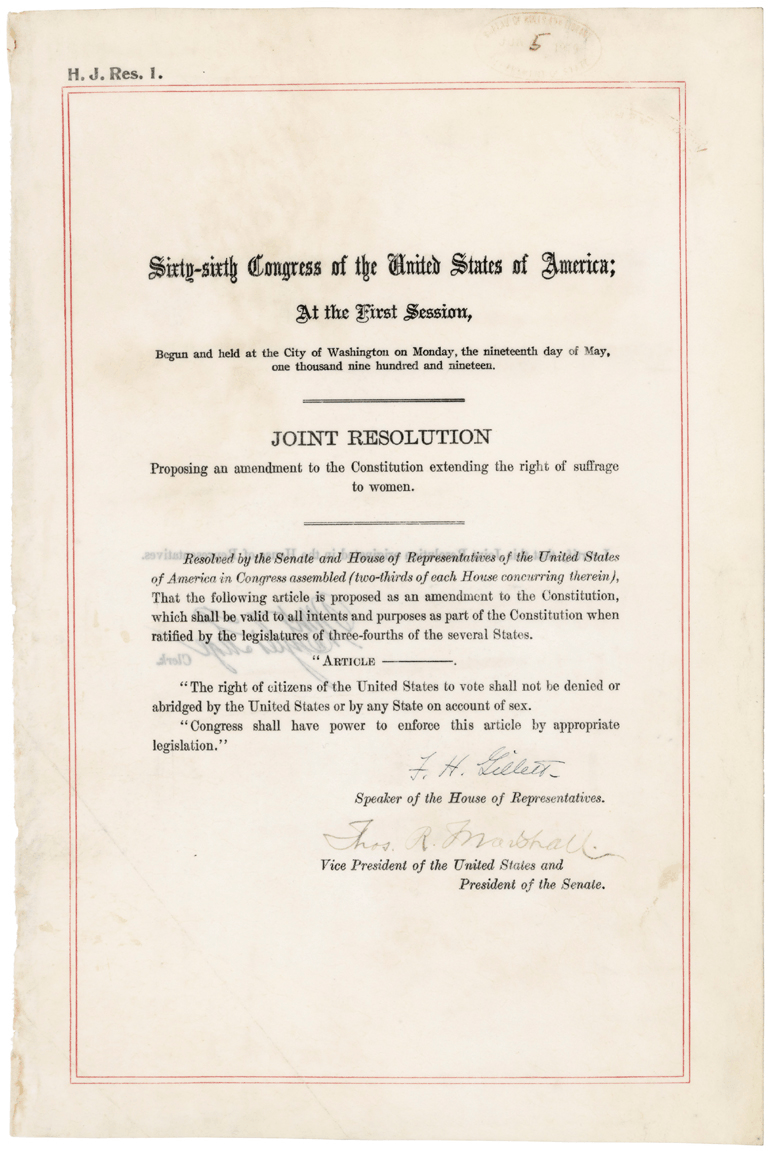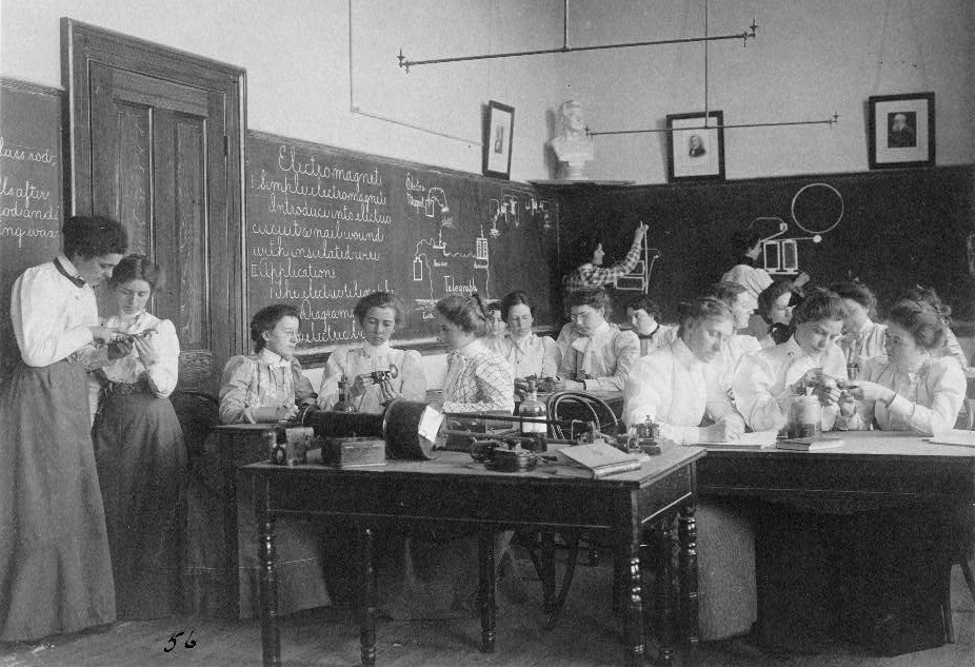 Elizabeth Cady Stanton |
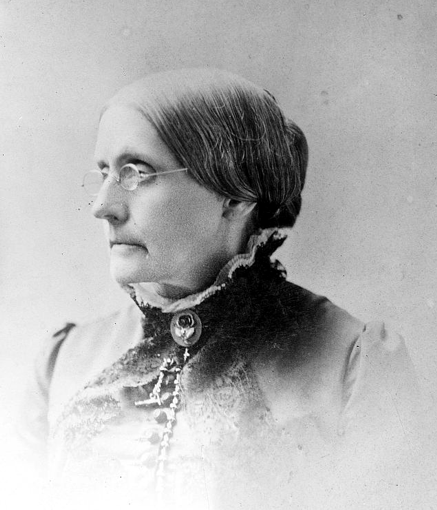 Susan B. Anthony |
|
Marching
for the right to vote
By 1913, when this women's suffrage parade was held in Washington, D.C., both Stanton and Anthony had passed away. Their cause, however, was growing stronger year by year. |
